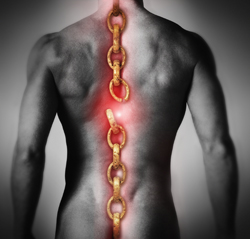Stem cell therapy for spinal cord injury
Spinal cord injuries remain without any specific therapy. Despite initial optimism from trials, neuroprotective molecules and poorly defined stem cells have not provided satisfactory controlled therapies. The EU-funded project ‘From stem cell technology to functional restoration after spinal cord injury’ (Rescue) explored the ability of human stem cells to treat spinal cord damages. For that purpose, neural and non-neural stem cells were selected and evaluated in a rat model of spinal cord injury. Resident stem cells in human and rodent spinal cord were successfully characterised. This achievement initiated a new long-term objective of the investigation of their fate in healthy and damaged rodent spinal cord. A primary objective of Rescue was to decipher the safety of grafting adult neural stem cells from human biopsies. The experiments showed the formation of tumours from these grafts; therefore, novel optimised strategies are required. Human neural precursor-derived astrocytes were successfully differentiated showing promising results regarding axonal growth on collagen scaffolds. In addition, the adipose stromal stem cells performed better than the classical bone marrow preparation. Rescue scientists extensively examined the abilities of these cells in different scaffolds. Rescue scientists worked intensively on the regulation of cellular differentiation, especially regarding cell orientation and sorting. Transcription factors were targeted to the cells using different viral vectors. The vectors with the best conditions regarding proliferation ability and phenotype were selected for further transplantation studies. A novel viral vector was developed that might be suitable for clinical applications. Furthermore, the Rescue consortium created conditionally immortalised neural stem cell lines with very promising features. The impact of Rescue’s achievements in the field of stem cell-based therapies of damages and in particular of spinal cord injuries is significant. It was thoroughly demonstrated that stem cells intrinsic to the human spinal cord are a potential source of therapeutic cells and factors. Future research may focus on a comprehensive in detail characterisation of its phenotypes.







